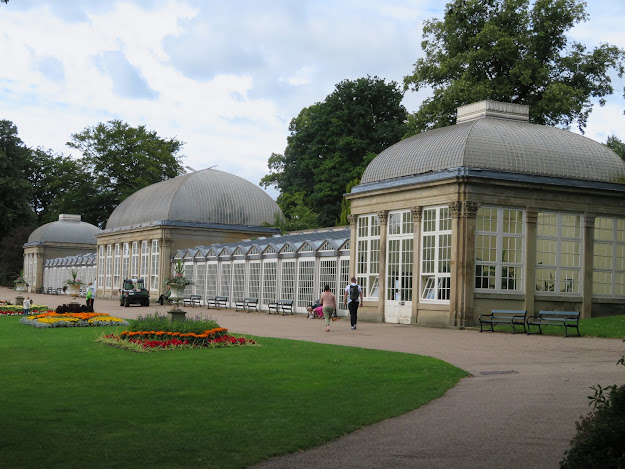We had a very quiet night and it was warming up already when we set off. Once we left the lock there was a wide beam approaching.
Conisborough was built following the Normas Conquest by William De Warenne. Not long after the mid 1400's the curtain wall failed due yo subsidence and the castle failed to supply any form of defence. It changed hands several times and was so derelict that it played nom part in the English Civil War. In 1819 Sir Walter Scott used it as the setting for his novel Ivanhoe and following this it increasingly became a tourist attraction. The design of the castle is unique and so is thought of as a gem. The central keep is round but has four massive butressess.
This is the site of the old Conisborough lock. The old river route was to the other side of the lock. The canal was removed in 1972 as it only had a rise and fall of 15". Th e recesses for the gates are easily seen still.
It was certainly heating up as we approached Doncaster. Only a couple of boats moving until now.
Doncaster Lock is a bit of a mismatch as only one side is straight. I assume that they were unable to do the full construction due to the East Coast Railway Line at the far end.
Just north of the visitor moorings at Doncaster is Gas House Bight. This was the actual route of the river at one time and a gas works. Where the little marina is next to the visitor moorings was where the river headed 'inland' and cam out again at Gas House Bight. A new cut was made across the neck in about 1935, and cut off the bight, which was retained for access to the factory. There are now plans to create a new marina in the large basin along with other utilities like shops etc.
We stopped at Bramwith Services to top up with water. A C&RT bloke came over and told us that the bridge was playing up so to give him the nod when we wanted to pass through and he would work us through using the solenoids. He also told us that the system was overheating and at Keadby and Selby the heat was also causing problems. They had the Fire Brigade at Keadby playing water on the bridge so as to enable boats to pen up from the river. Here at Stainforth was a building site that looked like it could be the training establishment for soldiers learning the art of house to house fighting! In fact it turns out that the builder went bust and the local youths seemed to have used it as an amusement park!
We stopped at Staniland's to top up with fuel, taking on 48 litres. 85p/ltr seemed expensive but needs must I suppose. I think fuel will not be one of our main expenses on the boat this year. We dropped down the lock and moored up on the visitor moorings. We later went to meet friends at the Windmill. When we were there, the skies darkened and the thunder and lightening went off and the rain came down in monsoon style. Luckily we were under a gazebo and it was so wet and noisy with the rain and wind as well as the the thunder claps. It was amazing. It was son gone and we wandered off the short distance back to the boat.




















































